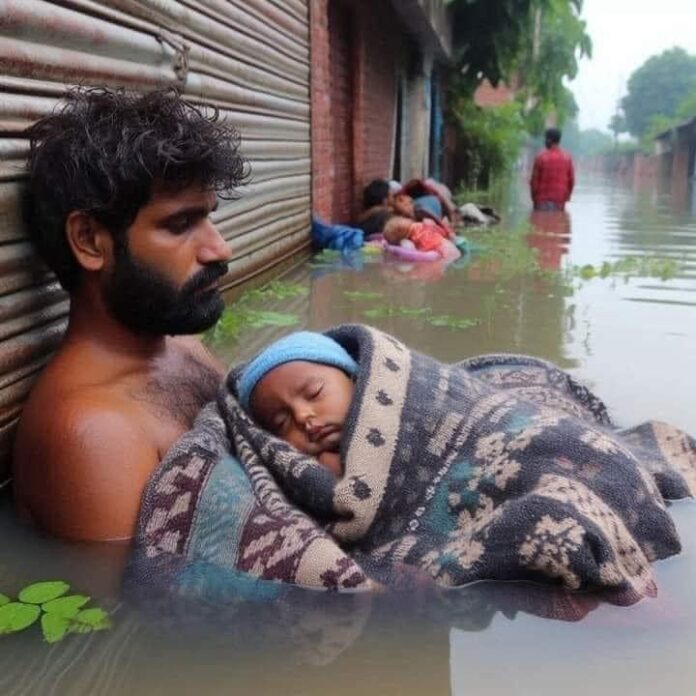Heavy rains and water flow from India have caused severe flooding in ten districts of southeastern Bangladesh, affecting over 3.6 million people since Tuesday. The affected districts include Cumilla, Feni, Chattogram, Khagrachhari, Noakhali, Moulvibazar, Habiganj, Brahmanbaria, Sylhet, and Lakshmipur.
As of Friday night (August 23), eight people have died in Feni, Brahmanbaria, and Cox’s Bazar’s Ramu due to the floods. The Khawai River in Habiganj is 2.77 meters above the danger level, and the Gomati River in Cumilla is flowing 1.36 meters above normal, with levels rising by 5-7 centimeters per hour. Hundreds of thousands in Feni are without power, and the Dhaka-Chattogram highway is knee-deep in water. The Bangladesh Meteorological Department warns of heavy rain continuing until noon, with a possibility of increased rainfall in Khulna and Rajshahi.
Recent rainfall has been extreme, with Cox’s Bazar receiving 275mm, Cumilla 194mm, and other areas experiencing significant downpours. The Flood Forecasting and Warning Centre reports that while water levels in Sylhet and Chattogram were rising, they began to recede later, except in Cumilla where levels remain high.
Floodwaters from broken embankments in Feni have left many trapped and without power. Most areas of Parshuram, Fulgazi, and Chhagalnaiya have been without electricity since Monday night due to damage from the floods. Over 300,000 of Feni’s four lakh customers are without power, and around 70% of the Power Development Board’s customers are affected.
The Ministry of Disaster Management and Relief reports that 495 unions across 65 upazilas in 10 districts are flooded, affecting about 586,000 families. In response, 2,246 shelters have been set up for 82,694 people and 7,755 livestock. The ministry has allocated Tk3.32 crore in cash, 19,650 metric tonnes of rice, and 15,000 dry food packets for relief.
Rescue operations are underway, with the army, Border Guard Bangladesh (BGB), and volunteers using speedboats to evacuate stranded individuals. Medical teams are also deployed to provide aid.
FFWC Executive Engineer Sarder Udoy Raihan noted that this flood is more intense than previous ones, largely due to heavy rains and upstream flooding from India. He added that while water levels in some rivers might rise slightly, most are expected to fall below danger levels in the next 72 hours.
Experts point to record rainfall in India’s Tripura state and water release from an Indian dam as key factors in the severe flooding in Bangladesh. The majority of water in Bangladesh’s rivers comes from neighboring countries, and insufficient dredging has worsened the situation.
International organizations, including Save the Children, have also stepped in, sending medical teams and emergency supplies to affected communities. However, the scale of the flooding has made it clear that long-term solutions are needed to address the increasing frequency and severity of such natural disasters.
References: – The Daily Star [Aug2024](https://www.thedailystar.net) -The Business Standard https://www.tbsnews.net/ – Save the Children International [Aug 22, 2024](https://www.savethechildren.net)]
Article written by: Main Ahmed




